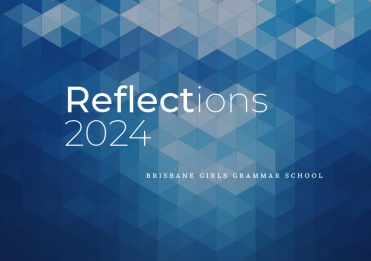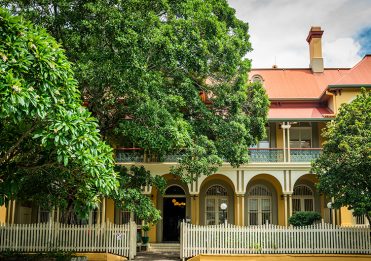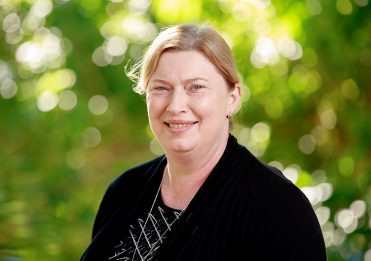In 2018, women held only 25.8 per cent of directorships and 17 per cent of CEO roles. More than 35 per cent of boards and governing bodies were lacking female directors, but in stark contrast, only 0.9 per cent of boards and governing bodies had no male representation as directors (“Gender workplace statistics”, 2019). Many factors are at play in determining a young woman’s progression to a role such as CEO or Director—these include differences in access to developmental pathways, levels of individual self-efficacy, mentoring opportunities and levels of female representation in particular industries.
Passionate about the education of adolescent girls, Brisbane Girls Grammar School strives to support and promote research into the formative years of childhood and adolescence to seek to determine exactly how various activities and influences can impact the wellbeing, career outcomes and success of women into adulthood.
Early in 2017, the School was approached to contribute to research instigated by the Australian Gender Equality Council, and conducted by The University of Queensland AIBE Centre for Gender Equality in the Workplace, which sought to uncover any differences in the confidence levels between boys and girls in single-sex schools in Queensland. Through surveys conducted with 10 076 students at single-sex schools, including Brisbane Girls Grammar School, the results concluded, favourably, that significant differences did not exist between the social self-efficacy of girls and boys at any age (Fitzsimmons, Yates and Callan, 2018). The study also highlighted the key experiences and activities that resulted in the greatest levels of self-confidence amongst adolescents, and found that both girls and boys derive comparable degrees of confidence from similar activities. Many of these activities are valued deeply at Girls Grammar, and provided in abundance to our girls.
Interestingly, travel was found to be the greatest predictor of self-confidence—particularly local and interstate travel, as opposed to international travel (Fitzsimmons et al., 2018). The effect increased when travel was unsupervised or minimally supervised. Seemingly small actions, such as catching the bus to school, or negotiating public transport options on the weekend, have a significant impact on students’ selfefficacy. Other unsupervised or low-supervision activities also had this effect: ‘those who did have a part-time job showed significantly greater levels of self confidence than those without’ (Fitzsimmons et al., 2018, p. 7-8). Similarly, adolescents who maintain the responsibility for a range of household chores, have increased levels of self-confidence (Fitzsimmons et al., 2018).
The second greatest predictor of self-confidence was found to be participation in team sport (Fitzsimmons et al., 2018). Proudly, Girls Grammar has historically sought to provide girls with a wide range of sporting opportunities, and even traditionally individual events such as swimming or cross country are structured to ensure that the girls’ results contribute to the School team as a whole. The School’s extensive co-curricular program allows girls not only to strive for and achieve deeply edifying goals of personal success, but to feel the support and sense of shared pride that comes with contributing to a group goal.
Team sports, among other initiatives, create opportunities for the study’s third greatest predictor of self-confidence: participation in leadership roles and leadership development (Fitzsimmons et al., 2018). At Brisbane Girls Grammar School, leadership opportunities for students are many and varied, and available to students from Year 7 through to Year 12. Whether through leadership of their House Group, as coordinators of Service activities, as captains of sporting teams, or as student mentors in roles of House Prefect or Study Buddies, girls are encouraged to see themselves as capable and authentic leaders, and to value their own thoughts, opinions and plans for the future.
While providing many actionable learnings about developing confidence in adolescence, the study raised several potential areas for improvement and questions for further research. While outdoor and sporting activities were found to boost confidence in adolescents, indoor, screen-based activities such as computer gaming and social media usage were identified as the ‘greatest detractors’ from the development of self-confidence (p.7). Further study in this area would be advantageous, to identify more specifically which activities were detrimental, and to what extent students should limit their involvement in them.
The study also identified a decline in both girls’ and boys’ confidence as they become older which is an effect that has been identified in previous studies (Fitzsimmons et al., 2018). Perhaps this is a natural and necessary part of progressing through adolescence. Again, more study is required to explore exactly why and how this decline occurs.
However, as educators and supporters of young women, by supporting them in developing their independence, promoting their engagement in team sports and by honing their leadership and mentoring skills, we can support them to maintain a well-founded confidence that remains with them as they leave school and enter university, the workplace and the boardroom or contribute in their families and communities.
References
Hari, R., Henriksson,L., Malinen, S. and Parkkonen, L. (2015). Centrality of Fitzsimmons, T.W., Yates, M. S., & Callan, V. (2018). Hands Up for Gender Equality: A Major Study into Confidence and Career
Intentions of Adolescent Girls and Boys. Brisbane, Qld: AIBE Centre for Gender Equality in the Workplace – The University of Queensland Gender workplace statistics at a glance 2017-18 | wgea. (2019). Retrieved from https://www.wgea.gov.au/data/fact-sheets/gender-workplace-statisticsat-a-glance-2017-18




